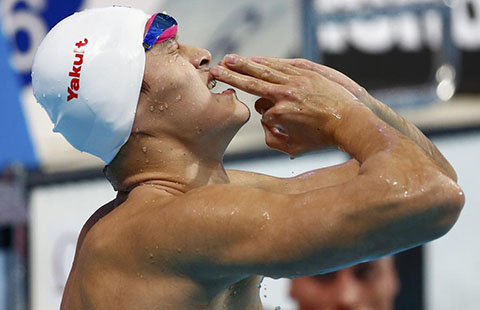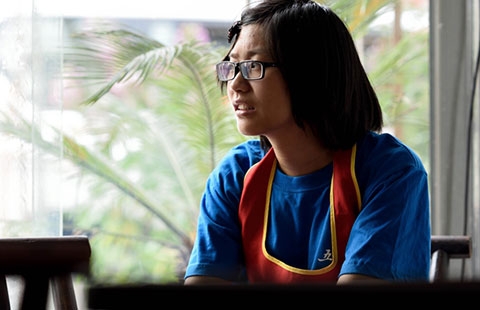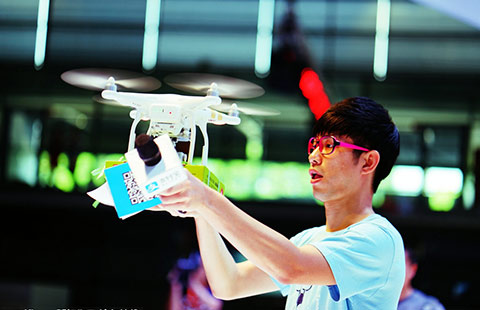Chinese spur medical-tourism growth in the US
Updated: 2015-08-08 01:59
(China Daily USA)
|
||||||||
China’s hospitals
Under a complicated rating system which takes into consideration doctors’ academic credentials and experience, as well as equipment and facilities, there are about 1,000 hospitals in China classified as top-ranked. The rating, however, is not equivalent to good treatment.
Public hospitals face challenges in providing care to those who need it, and are overwhelmed with demand.
Jiang Shuqing, chief physician at the Beijing Obstetrics and Gynecology Hospital, said she usually spends only five minutes on each outpatient case. “It would be nice to talk longer and examine further,” said Jiang. However, she said with 50 people waiting outside her office, the each day is a battle.
With a reputable history of 50 years and about 660 beds, Jiang said her hospital struggles to treat patients. “It’s a common sight in our hospital that people form long lines in the early morning, sometimes from midnight, to make sure they secure an appointment,” she said. “Many of them are traveling from afar and are non-Beijing residents.”
Limited medical facilities and resources have caused inadequate and overly expensive medical services, said Jiang, adding that the problem sometimes triggers disputes between doctors, hospitals and patients.
If big medical bills do not give the desired outcome, some patients or a member of their family resort to violence over perceived mistreatment by doctors. Chinese hospitals report an average of 27 attacks a year per hospital, according to a 2013 survey conducted by the Chinese Hospital Management Association. The survey indicated that violence against medical personnel rose by 23 percent on average each year between 2002 and 2012.
Chinese hospitals struggle to be financially independent and often operate like profit-seeking entities. Relatively underpaid doctors seek extra monetary gains by ordering unnecessary drug prescriptions and sophisticated diagnostic tests and treatment, which can lead to exploitation of patients.
Some medical procedures are not completely for the benefit of patients, but are conducted for economic reasons, said John Cai, director of the Centre for Health Care Management and Policy at the China-Europe International Business School in Shanghai. “A system that emphasizes serving the patients is not yet established,” he said in an interview with the Wall Street Journal.
Lv Gang, a neurosurgical expert at the Beijing Tiantan Hospital, said the technology and medical skill gap between Chinese and US hospitals is remarkable.
Tiantan Hospital is a major comprehensive Grade III-A General Hospital, the highest level on the rating list based on the national healthcare system standard. But it lags behind in areas such as research on molecular mechanisms of helicobacter pylori-induced gastric cancer and molecular targeted therapy.
“For some of the malignant tumors, we doctors simply know too little to determine a definite diagnosis,” said Lv. “Not to mention effective treatment.”
Many Chinese patients suffer from misdiagnosis and most of them could have been treated accurately if they had received an accurate diagnosis, said Lv.
In February, the San Francisco-based medical consultancy provider MORE Health Inc received a case from Fujian province. Alex Zhang, in his 40s, suffered from progressive right limb weakness, chronic indigestion, trouble in swallowing and persistent pain. Undergoing lengthy treatment on presumed multiple sclerosis in local hospitals and seeing no improvement, Zhang decided to explore overseas medical treatment.
“We translated Zhang’s case records, and submitted his history to our contracted partners in three days,” said Hope Lewis, founder and chairwoman of MORE Health. “Two days after, we helped the patient secure appointments with Robert Knowlton and Mark Strassberg, both clinical neurology experts at the hospital affiliated with the University of California, San Francisco.”
Knowlton diagnosed Zhang’s disease as progressive multifocal leukoencephalopathy, a type of kind of leukodystrophy, which Zhang might have inherited from his family.
“The American doctors revoked Zhang’s original diagnosis from China, wrote him a new prescription and formulated a treatment plan targeting his symptoms,” said Lewis. “We were thrilled to see all these measures taking effect just within one week and now Zhang functions well.”
- Some 200 migrants believed dead in Mediterranean shipwreck
- Chinese FM rejects Philippine, Japanese, US claims on South China Sea issue
- 'Major breakthrough' may help solve riddle
- Hiroshima marks 70th anniversary of bombing
- World 'watching' Japan's next move
- Migrant boat capsizes in Mediterranean, at least 25 dead

 30 historic and cultural neighborhoods to visit in China
30 historic and cultural neighborhoods to visit in China
 Beijing Museum of Natural History unveils 'Night at the Museum'
Beijing Museum of Natural History unveils 'Night at the Museum'
 Sun Yang wins third consecutive 800m free gold at worlds
Sun Yang wins third consecutive 800m free gold at worlds
 Aerial escape
Aerial escape
 Freshmen of top universities from poorer families work part time to reduce family burden
Freshmen of top universities from poorer families work part time to reduce family burden
 17 armed forces take part in Russia military contest
17 armed forces take part in Russia military contest
 A glimpse of traditional Chinese business blocks
A glimpse of traditional Chinese business blocks
 Top 5 most popular drones in China
Top 5 most popular drones in China
Most Viewed
Editor's Picks

|

|

|

|

|

|
Today's Top News
China willing to work with US to contribute to world peace, stability
China asks further investigation on MH370
Police fatally shoot ax-wielding man at Nashville movie theater
Study-abroad tours in US booming
Malaysia confirms plane debris is from Flight MH370
IMF to study yuan inclusion
LA clinic seeks fertility-market access
China and US discuss ways to fight terror
US Weekly

|

|






